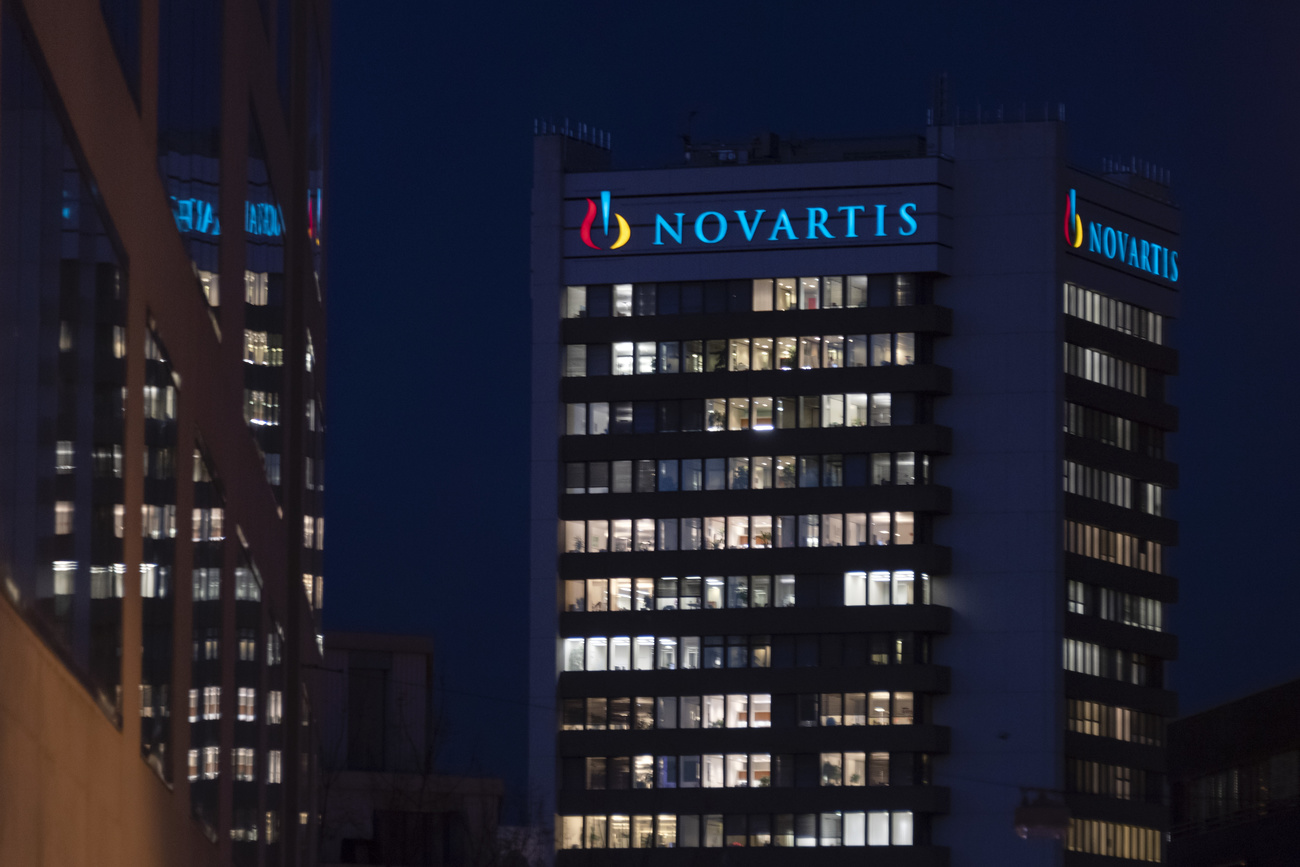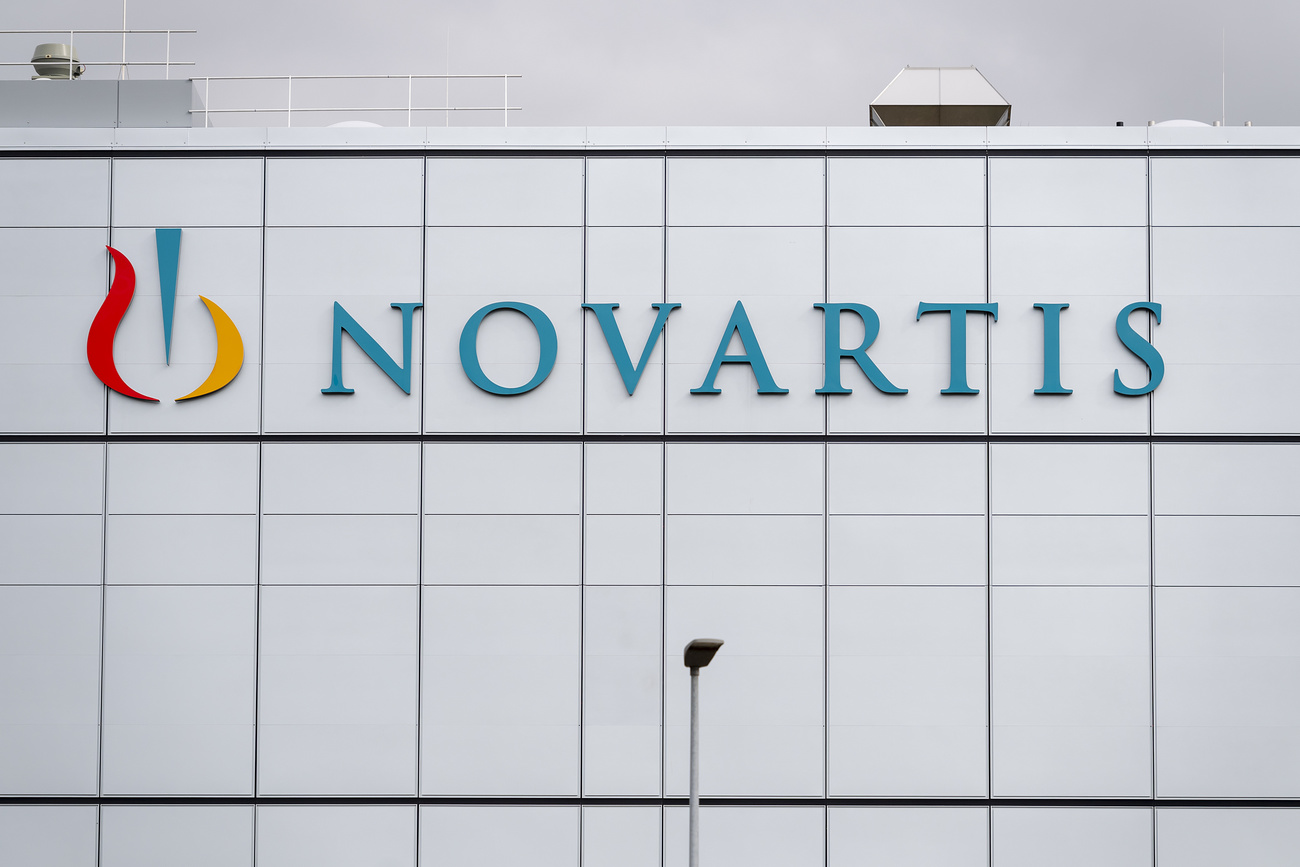
What’s behind the Novartis job cuts?

The recent decision by the Swiss drugmaker to shed 7% of its workforce is more than just a cost-cutting measure. It’s a turning point for Novartis, which is on the hunt for innovation that pays off.
There’s no easy way to announce job cuts, especially of the magnitude Novartis did last week. In Switzerland, the pharma giant is shedding 10% of its workforce – which means 1,400 jobs will disappear. Globally, 8,000 jobs out of about 108,000 will be cut over the next three years. This comes four years after the company slashed more than 2,000 jobs in Switzerland.

More
Novartis to cut 1,400 jobs in Switzerland
It hurts even more given the company’s 150-plus-year history in the Alpine country. There’s long been speculation that it could abandon Switzerland as its headquarters. Some jobs in administrative and IT functions are reportedlyExternal link being transferred to lower-cost locations including India and the Czech Republic. Nevertheless, CEO Vas Narasimhan has given reassurances on various occasions about the company’s commitment to Switzerland.
“We have a long history in Switzerland. This is definitely a Swiss company, and we expect it to be that way for at least another century,” Narasimhan toldExternal link the French-language paper Le Temps in May.

More
Swiss pharma reckons with its past, present and future
External linkThe decision to eliminate so many jobs in one fell swoop appears to be less about the company’s feelings towards its home base and more about shifting winds in the pharmaceutical industry. To be a big player in the industry, it’s no longer about having a big workforce. It’s about having big medicines – that is, medicines that lead to dramatic changes for patients and large payouts for companies. The meteoric rise of small biotechs like Moderna and BioNTech on the backs of major technology breakthroughs has only reinforced this.
Big medicine for fewer patients
Novartis has had the best record in the industry when it comes to drug approvals by the US Food and Drug Administration. They had 14 drugs approved in the last five years, more than any other pharmaceutical company. But only a fraction of their revenue comes from those new drugs.
According to an analysisExternal link by the consulting firm IDEA Pharma, only 8% of Novartis’ revenue in 2021 came from drugs approved in the last five years. Fellow Swiss pharma company Roche only had eight approvals over the same period, but these accounted for nearly 25% of its revenue last year. At the higher end, more than 70% of revenue for the Japanese company Takeda came from four drugs – all of which were approved in the last five years.

More
I’m an expat and I lost my job. What now?
“Novartis has had a follow-the-science mentality but then the market wants something different,” said Mike Rea, CEO of IDEA Pharma, which has worked with Novartis in the past and currently counts Roche as a client. “The restructuring at Novartis is an admission that they’ve been picking products that aren’t generating revenue.”
This comes as many companies are shifting away from general medicine and a one-size-fits-all pill into personalised medicine and targeted treatments like gene and cell therapies that can address fewer people with more specialised areas of unmet needs.
Cell and gene therapies only account for 1% of market launches but as of February 2020 they were 12% of the industry’s clinical pipeline, according to an analysisExternal link published by the consultancy firm McKinsey. By 2025, the US federal regulator expectsExternal link to approve 10 and 20 cell and gene therapy products per year.
For Novartis the shift to specialties is more dramatic than many peers because it’s had such a diversified portfolio.
“They have developed at lot of candidates but not consistently enough that they could develop a specialty. They’ve switched strategies a lot and have not been digging deep into specific areas,” said Rea.
Since Narasimhan took over the CEO post in 2018, Novartis has been shedding parts of its business. It sold its consumer healthcare unit to GSK and spun off its eyecare division Alcon into a separate entity in 2019. Late last year it initiated a review of its generics and biosimilars division Sandoz, which is expected to be sold or spun off, according to media reportsExternal link.
The latest restructuring announced in April, which includes combining the company’s oncology and pharmaceutical divisions into an innovative medicines unit is a significant reshuffle and mirrors changes at Roche and other competitors. Three top executives lost their jobs due to the changes.
“The concern in most large companies is that they are large. The pandemic has led companies to look at the layers in companies and ask what is it that my workforce does and is it successful at it,” said Rea.
Novartis now refers to itself as a “focused medicines company” built around select therapeutic areas and technology platforms such as gene therapy, which treats disease by addressing the underlying genetic cause.
Picking drugs like racehorses
The company expects the restructuring to save $1 billion by 2024. But the company isn’t hurting for cash after selling off its 33% stake in Roche last year. The question is how it plans to spend the money, if not on beefing up its workforce. Part of the answer lies in its approach to research and development.
Although research was one of the few areas that was spared in the latest job cuts, Novartis appears to be looking more outside the organisation for sources of innovation. In April, the company hired longtime Wall Street pharma analyst Ronny Gal for a newly created position as Chief Strategy and Growth officer. He’s tasked with “leading Novartis’ corporate strategy, R&D portfolio optimisation and business development”.
“I think the company could benefit from having an independent view on whether the assets we take forward either internally or externally […] can really generate that multibillion-dollar potential we’re looking for and have that voice in the room so that we can then say ‘no’ to the projects that aren’t going to make it and have the resources available to really invest in the ones that we believe do,” Narasimhan saidExternal link at the time of the announcement.
This reflects the stronger ties between R&D and business development arms of the business as companies increasingly look outside their own labs to academic spin-offs, start-ups and smaller biotechs as a source of innovation. “They’ve appointed someone to be a product-picker like someone picks a racehorse,” says Rea.
Selling specialties
This strategic shift also requires a different kind of sales organisation. Novartis has historically had higher operational costs (sales, administration and communication) than many peers. These costs represent 30% of revenue at Novartis comparedExternal link with around 20% at Roche, according to the Tages-Anzeiger newspaper.
These are the areas where jobs are being eliminated in a move to create a “leaner and simpler” organisation, wrote Novartis in an email to SWI. This follows moves by other companies such as Pfizer, which in January announcedExternal link that it was trimming its sales staff as it evolves into a more “focused and innovative biopharma company” and healthcare professionals expect fewer face-to-face interactions with drug companies in the digital age.
The actual roles and skills of the salesforce are also changing as people push back on the high price tag for many gene and cell therapies.
Novartis experienced this first-hand when it launched Zolgensma in 2019 – a gene therapy to treat spinal muscular atrophy that was billed as the most expensive treatment ever at $2.1 million for a single injection. In some countries, it has taken months or years and deep legal and financial expertise to agree on new reimbursement and payment models.

In compliance with the JTI standards
More: SWI swissinfo.ch certified by the Journalism Trust Initiative





























You can find an overview of ongoing debates with our journalists here . Please join us!
If you want to start a conversation about a topic raised in this article or want to report factual errors, email us at english@swissinfo.ch.